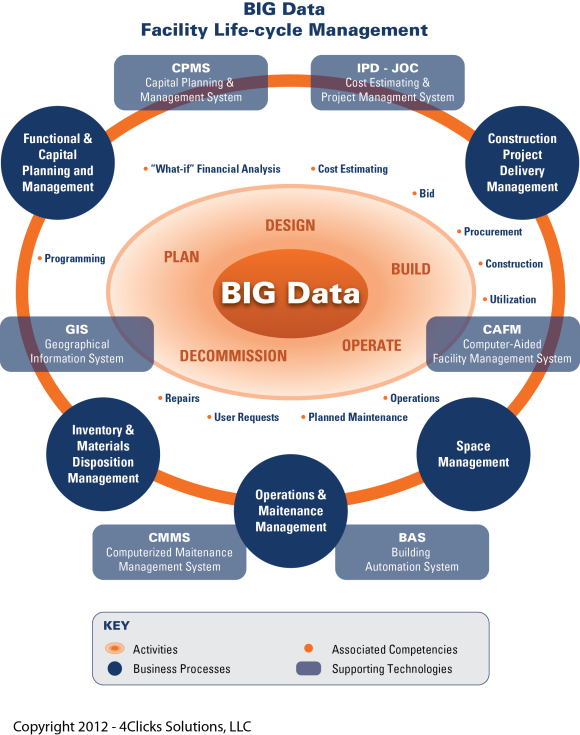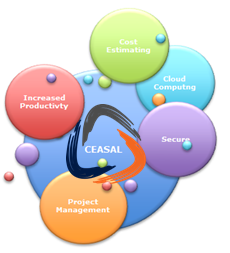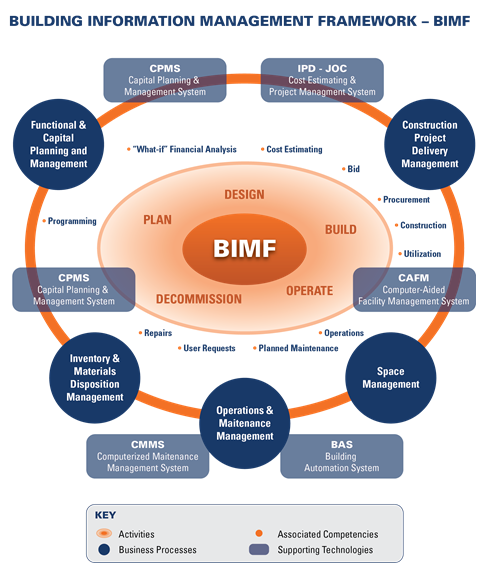In the long history of humankind, those who learned to collaborate and improvise most effectively have prevailed.
– Charles Darwin
BIM, the life-cycle management of the built environment supported by digital technology, requires a fundamental change in how the construction (Architects, Contractors, Engineers) and facility management (Owners, Service Providers, Building Product Manufactures, Oversight Groups, Building Users) sectors operate on a day-to-day basis.
BIM, combined and Cloud Computing are game changers. They are disruptive technologies with integral business processes/practices that demand collaboration, transparency, and accurate/current information displayed via common terminology.
The traditional ad-hoc and adversarial business practices commonly associated with Construction and Facility Management are changing as we speak. Design-bid-build and even Design-Build will rapidly go by the wayside in favor of the far more efficient processes of Integrated Project Delivery – IPD, and Job Order Contracting – JOC, and similar collaborative programs. (JOC is a form of integrated project delivery specifically targeting facility renovation, repair, sustainability, and minor new construction).
There is no escaping the change. Standardized data architectures (Ominclass, COBie, Uniformat, Masterformat) and cost databases (i.e. RSMeans), accesses an localized via cloud computing are even now beginning to be available. While historically, the construction and facility management sectors have lagged their counterparts (automotive, aerospace, medical, …) relative to technology and LEAN business practices, environmental and economic market drivers and government mandates are closing the gap.
The construction and life-cycle management of the built environment requires the integration off several knowledge domains, business “best-practices”, and technologies as portrayed below. The efficient use of this BIG DATA is enabled by the BIM, Cloud Computing, and Integrated Project Delivery methods.

The greatest challenges to these positive changes are the CULTURE of the Construction and the Facility Management Sectors. Also, an embedded first-cost vs. life-cycle or total cost of ownership perspective. An the unfortunate marketing spotlight upon the technology of 3D visualization vs. BIM. Emphasis MUST be place upon the methods of how we work on a daily basis…locally and globally − strategic planning, capitial reinvestment planning, designing collaborating, procuring, constructing, managing and operating. All of these business processes have different impacts upon the “facility” infrastructure and construction supply chain, building Owners, Stakeholders, etc., yet communication terms, definitions, must be transparent and consistently applied in order to gain greater efficiencies.
Some facility life-cycle management are already in place for the federal government facility portfolio and its only a matter of time before these are expanded and extended into all other sectors.
BIM, not 3D visualization, but true BIM or Big BIM, and Cloud Computing will connect information from every discipline together. It will not necessarily be a single combined model. In fact the latter has significant drawbacks. Each knowledge domain has independent areas of expertise and requisite process that would be diluted and marginalized if managed within one model. That said, appropriate “roll-up” information will be available to a higher level model. (The issue of capability and productivity marginalization can be proven by looking a ERP and IWMS systems. Integration of best-in-class technology and business practices is always support to systems that attempt to do everything, yet do not single thing well.)
Fundamental Changes to Project Delivery for Repair, Renovation, Sustainability, and New Construction Projects MUST include:
- Qualifications Based or Best Value Selection
- Some form of pricing transparency and standardization
- Early and ongoing information-sharing among project stakeholders
- Appropriate distribution of risk
- Some form of financial incentive to drive performance / performance-based relationships






